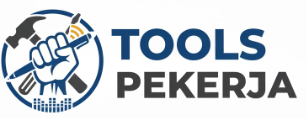The Rise of Online Supplement Shopping How Consumers Are Changing the Health Market invites readers into a vibrant discussion about the evolving landscape of health products. With the surge in digital commerce, consumers are taking charge, exploring an array of supplements from the comfort of their homes. This shift not only reflects changing consumer preferences but also drives innovation and competition within the health market.
As we delve deeper into this topic, we’ll explore how online shopping is shaping consumer choices, the variety of products available, and the implications for traditional retail. From health enthusiasts to casual shoppers, the online supplement market is captivating a diverse audience, making it crucial to understand these dynamics.
In market today’s fast-paced world, the art of communication plays a pivotal role in both personal and professional realms. While many of us focus on the substance of our messages, the manner in which we convey our thoughts can significantly affect outcomes. Whether you’re sending an email, participating in a meeting, or engaging in a casual conversation, striking the right balance between casual and formal language can enhance clarity and foster positive relationships.
Understanding the Nuances of Casual and Formal LanguageTo begin with, it is essential to understand the primary differences between casual and formal language. Casual market language is often characterized by its informal, conversational tone. It utilizes everyday vocabulary and may include slang or colloquialisms. This style is frequently employed in social interactions and among friends, where the focus is on ease and comfort.On the other hand, formal language is more structured and adheres to specific grammatical rules.
It market avoids slang and contractions, opting instead for complete sentences and a more sophisticated vocabulary. This style is typically reserved for professional settings, academic writing, or situations where respect and seriousness are paramount. Why It MattersIn many instances, the ability to switch between casual and formal language, known as code-switching, can significantly impact the effectiveness of communication. For instance, in a workplace setting, a manager might use a formal tone during a company-wide presentation to establish authority and convey important information.
However, during a team lunch, the same manager might relax their language to foster camaraderie and encourage open dialogue.The market choice of language can influence perceptions and relationships. A friendly, approachable tone can make one seem more relatable, while a formal tone can lend credibility and authority. Understanding when to use each style is crucial for effective communication. The Best of Both Worlds: Casual Formal LanguageCasual formal language strikes a balance between the approachable nature of casual speech and the clarity of formal communication.
This market style is particularly effective in business emails, presentations, and networking events, where maintaining professionalism while being relatable is of utmost importance.Here are some key strategies for mastering casual formal language:
1. Use Clear Language
While market it’s crucial to maintain professionalism, clarity should never be sacrificed. Avoid jargon and overly complex terminology that might confuse your audience. Instead, opt for straightforward language that conveys your message effectively.
2. Incorporate a Friendly Tone
A casual tone can be achieved by using a conversational style. This includes employing rhetorical questions, using first-person perspectives, and sharing personal anecdotes when appropriate. These elements can make your communication feel more engaging.
3. Mind Your Audience
Tailoring your language to your audience is essential. Consider their preferences and expectations. For instance, if you’re addressing a group of young professionals, a more relaxed tone may be welcome. However, when addressing senior executives, a slightly more formal approach may be prudent.
4. Be Authentic
Authenticity resonates with people. Don’t try to mimic a style that feels unnatural to you. Instead, find a way to express your personality while still adhering to the conventions of professional communication.
5. Avoid Overly Casual Elements
While a casual tone can enhance relatability, be cautious about incorporating too many informal elements, such as emojis or slang. These can undermine your professionalism and may not be appropriate in all contexts. Practical Applications of Casual Formal LanguageLet’s explore some practical applications of casual formal language in various contexts:### 1. Email CommunicationWhen sending emails, particularly in a professional setting, it’s important to strike the right tone.
For example: – — Subject: Quick Check-InHi Team,I hope this message finds you well! I wanted to touch base regarding our upcoming project deadline. If you have any questions or need assistance, please don’t hesitate to reach out. I’m here to help!Looking forward to our collaboration.Best, [Your Name] – –In this example, the language is friendly and approachable while still conveying the necessary information.
The use of “I’m here to help!” adds a supportive tone without detracting from professionalism.### 2. PresentationsWhen delivering a presentation, consider incorporating casual formal language to engage your audience: – –“Good morning, everyone! I’m thrilled to be here today to discuss our new marketing strategy. I know you’re all busy, so I promise to keep this brief and to the point.
If you have any thoughts or questions along the way, please feel free to jump in!” – –This introduction maintains a professional demeanor while also inviting participation, making the audience feel valued and engaged.### 3. Networking EventsAt networking events, casual formal language can help establish connections: – –“Hi there! It’s great to meet you. I’ve heard so much about your work at [Company Name]! I’d love to hear more about your recent project—it sounds fascinating!” – –Here, the speaker demonstrates interest and approachability while maintaining a level of professionalism appropriate for a networking scenario.

The Importance of Context in CommunicationAnother crucial factor in effective communication is context. Different situations will call for varying degrees of formality. For example, a casual conversation with a colleague over coffee will allow for a more relaxed tone, while a formal presentation to a client will require a more structured approach. Recognizing these nuances will help you navigate conversations more effectively. The Role of Cultural ConsiderationsCultural context also plays a significant role in language choice.
Different market cultures have different norms regarding formality and familiarity. In some cultures, a more formal approach is expected in almost all business interactions, while others may embrace a more casual style from the outset. Being aware of these cultural differences can enhance your communication and help to build rapport. ConclusionIn summary, mastering casual formal language is an invaluable skill in today’s diverse communication landscape.
It market allows you to engage effectively across various contexts, fostering relationships while maintaining professionalism. By being clear, authentic, and mindful of your audience, you can navigate conversations with ease and confidence. Whether you’re crafting an email, giving a presentation, or networking, striking the right balance between casual and formal will serve you well in your personal and professional endeavors. Ultimately, effective communication is about connection, understanding, and clarity, and finding the sweet spot between casual and formal language can help you achieve just that.






